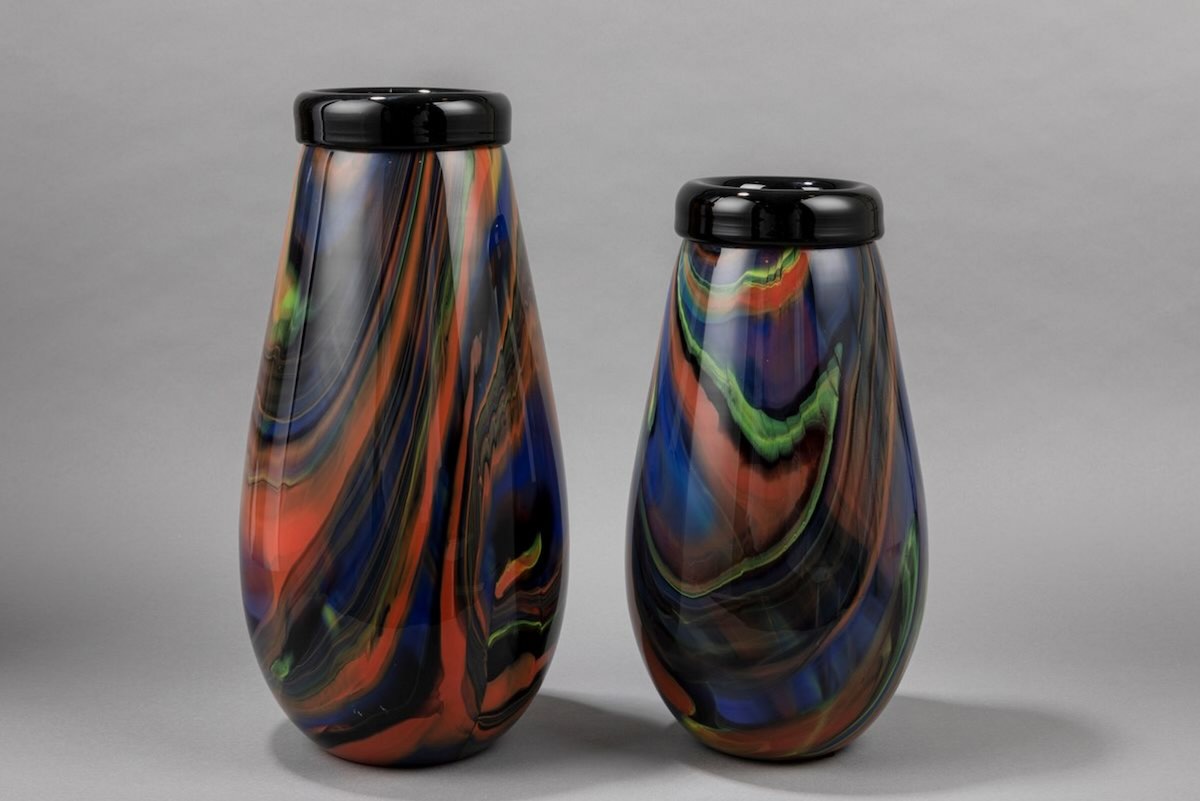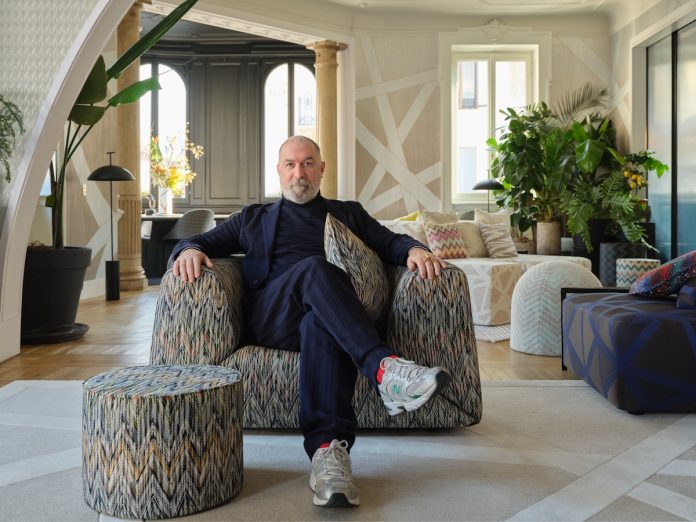You have a long history with Missoni, first in fashion, then at home. For Milano Design Week 2024, you started a collaboration with Roda, with a small outdoor collection. What is your path?
I was born in Sorrento, I left when I was 18 and studied at the Art Institute – I liked colours, so I was immediately interested in fabrics. I came to Milan, where I attended the IED: it helped because I started to know the city, to work in fashion right away. It was a very dynamic time, I would stay in one place for six months, a year and then move on. I did men’s fashion, women’s fashion, trend books. And I used to paint: a friend who was opening a big disco commissioned me to do 40 two-by-two-metre canvases, I would go to school in the morning and then paint all night with my Walkman on. Now I couldn’t.
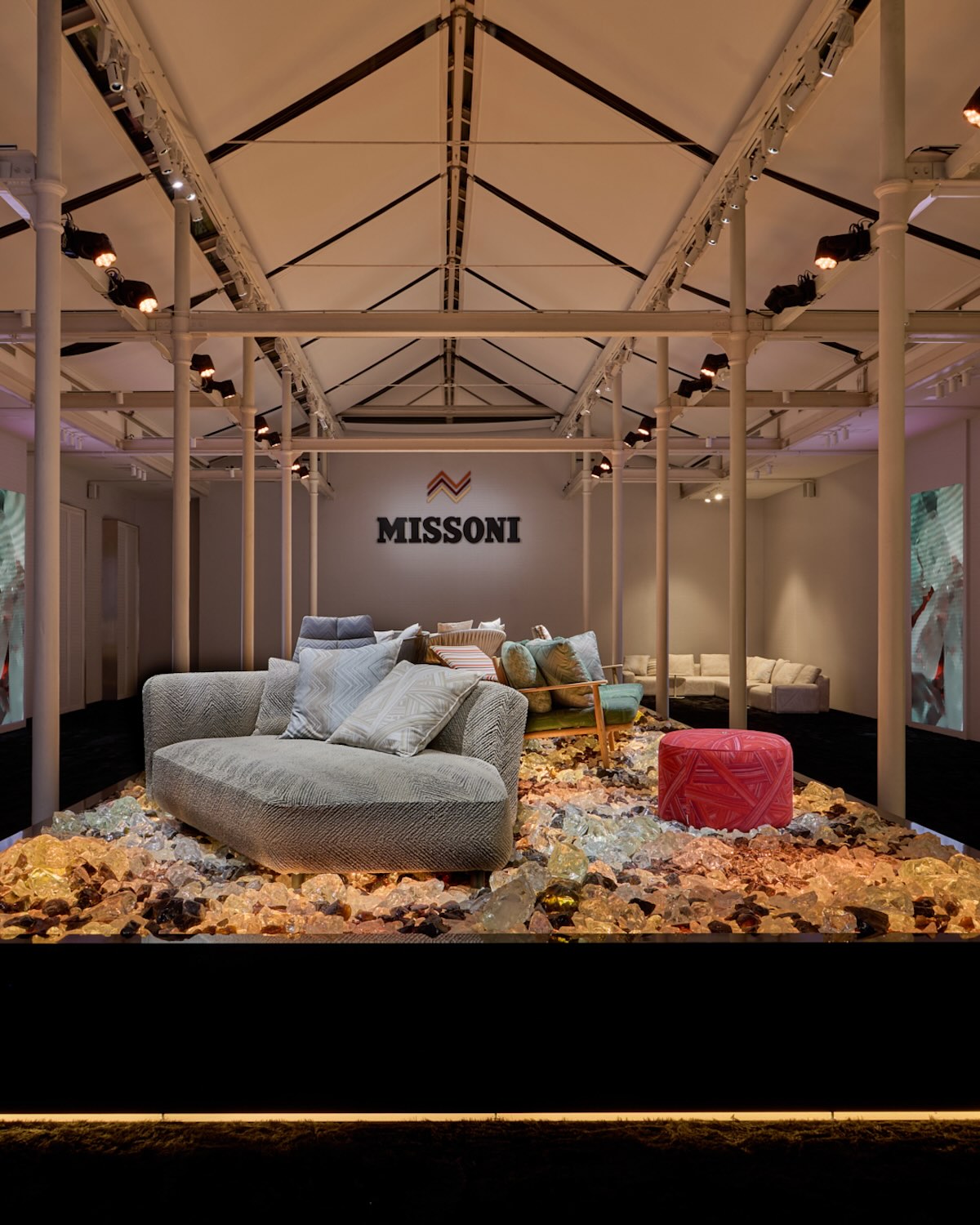
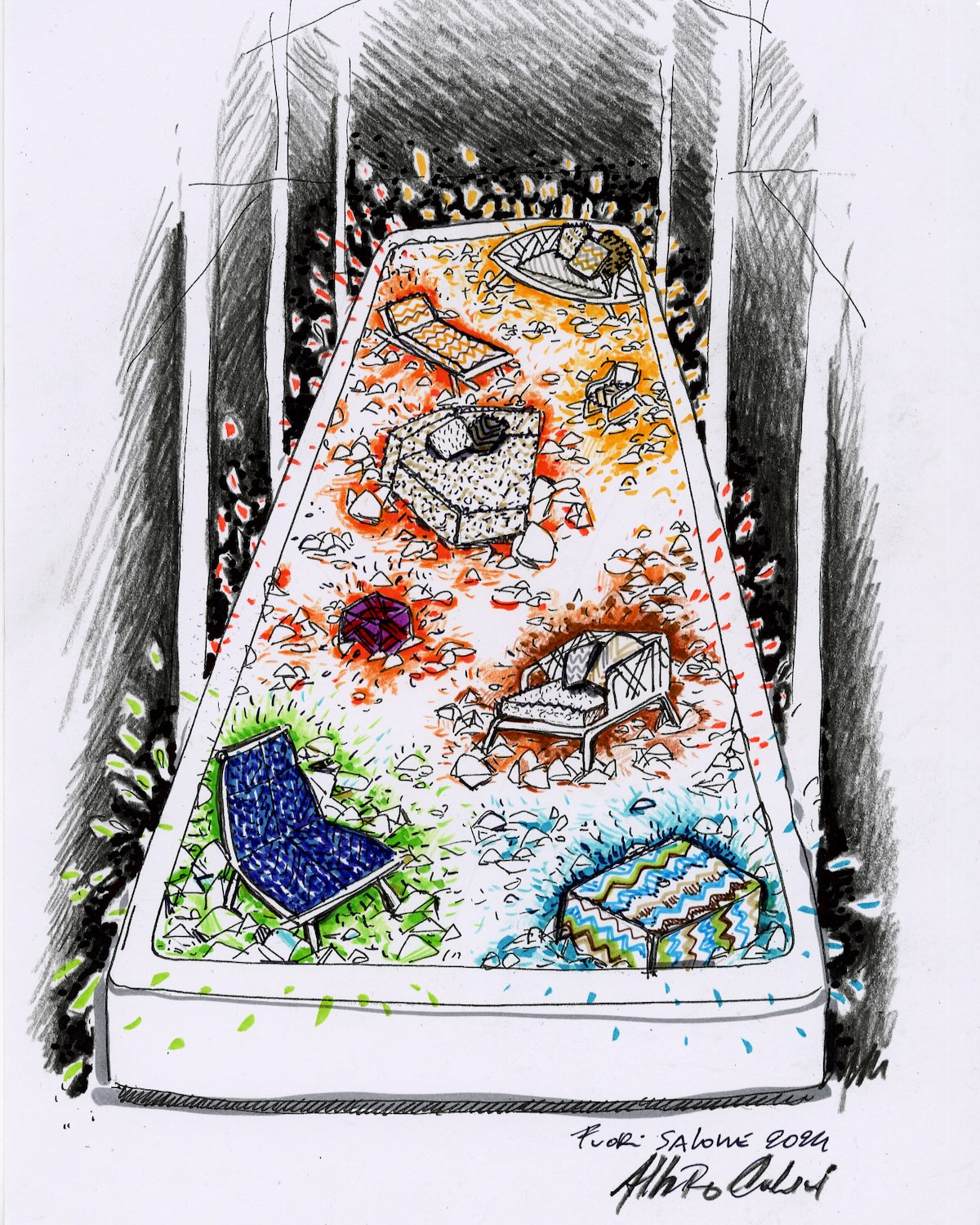
What were the key stages of this journey?
An important step was at Prada, where I designed prints: there I understood the meaning of quality, we made a floral pattern with twenty squares of print. It was crazy, but the result was more beautiful than the original. Then two of the first people I worked with, Paolo Battaglia and Antonio Ponte, came to Missoni and called me in. They were doing the collection for the fashion show, and at a certain point Angela Missoni suggested that I take over the pre-collection. I accepted with a touch of recklessness because the things I had done before were smaller anyway and with someone above me. Then it was a crescendo: I started to do menswear, then womenswear when Angela stepped out. There were times when I would go to the company in Sumirago and sleep under my desk for half an hour, then go back to work. I’ve always been interested in relationships with people, making clothes for people. And I like integration: for a long time, people in design, fashion and art were at each other’s throats. Then, in the end, everyone came closer: I like the idea of working together, the way it used to be done. As an end product, but also as a relationship.
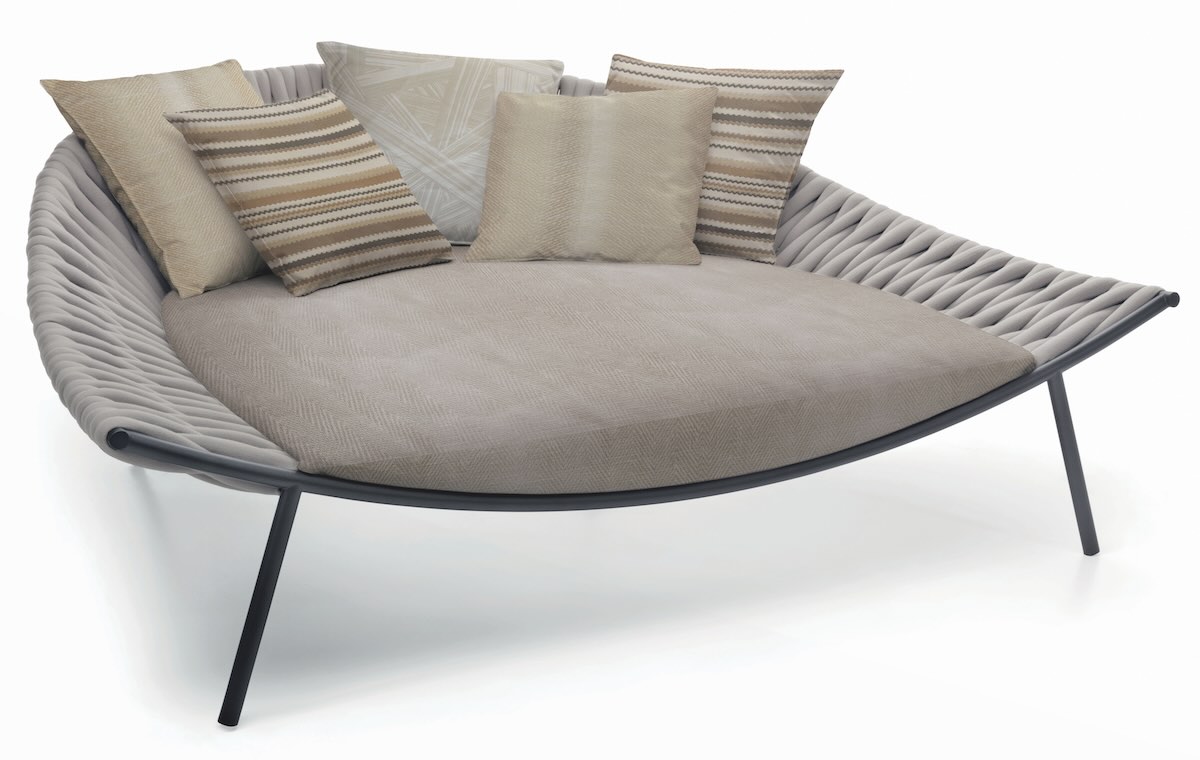
When did you start designing the home collection?
Two years ago, it is an area that has always interested me on a personal level. For me, it is the opportunity to bring the different souls of the Missoni world into dialogue, true lifestyle, total contamination between all the products. I try to bring all these voices into dialogue to create an overall vision.
Are you still involved in the clothing side?
They call me from time to time, I don’t rule out the possibility of expanding it, but I’m not leaving the Home project.
What is your relationship with the Missoni legacy?
It’s something colossal. We are lucky enough to have a crazy archive that is very well managed. An important heritage. I was lucky to meet Tai and his wonderful madness, with Rosita – 93 years old – we see each other every two weeks and she continues to be modern, to have a very precise eye. People with talent, without fear. The most important thing in their story is their mental attitude, not being afraid to take a different path from the others. With ease. Looking at the archive, I noticed the courage to try ‘wrong’ juxtapositions which, once realised, create a new language. It is something that needs to be nurtured but also developed. It would be too easy: take the 20 most beautiful things and make a bang. And then what? We have a moral obligation to add a new piece for those who will come after us. So we have started to introduce new things and it is starting to pay off.
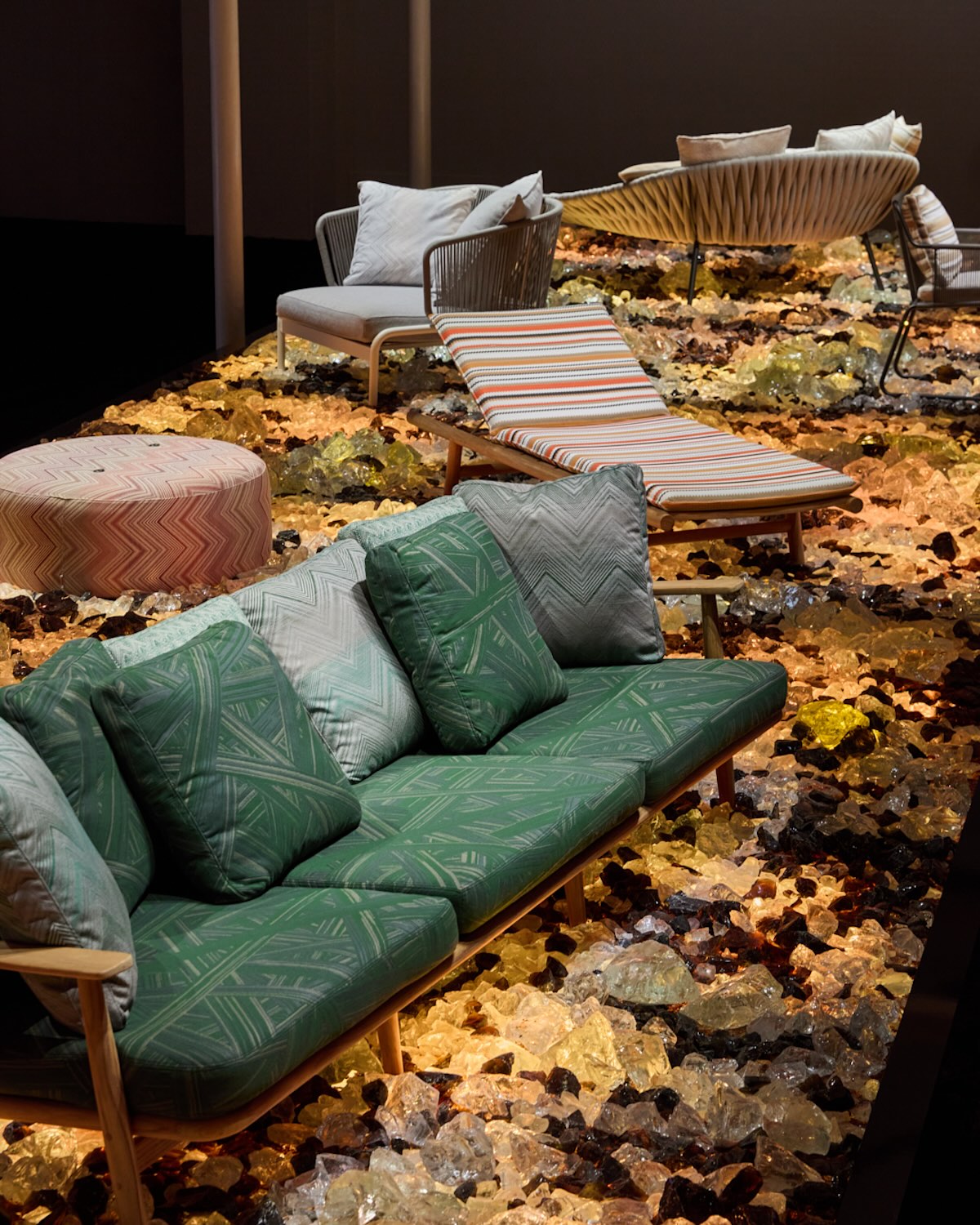
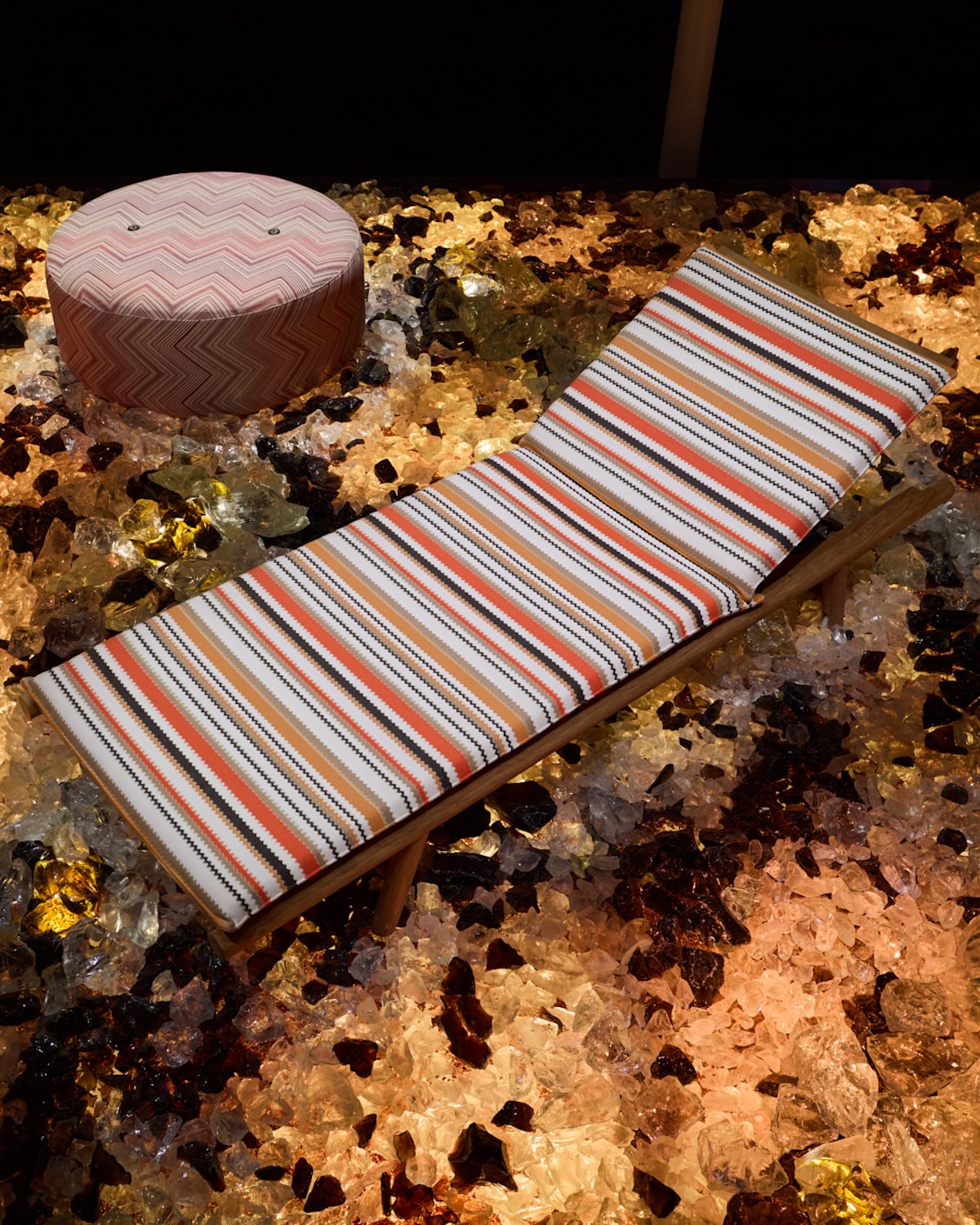
Do you work alone or as part of a team?
I used to do a lot of things myself, but now I prefer to rely on the people who work with me. I often manage to push them beyond their own limits. That’s the best thing about my working life: having these long fingers that are better than me. Luck, of course, but also the choice of a team made of love, of a common spirit.
How do you transfer fashion concepts to furniture?
Our core is still textiles, we don’t have recognisable ‘forms’ yet (although this is a process that will happen): if you don’t have the distribution chain, you can make the most beautiful things in the world, but the story ends there. Most of the work is done on the material part. This is what the relationship with Roda was based on: two skills coming together, technical expertise on the one hand and style on the other. After an initial half-hour discussion, everything melted away and the project went full steam ahead. This is something we try to do with all licences: porcelain, carpets. And use these things in our residential projects. An all-round collaboration.
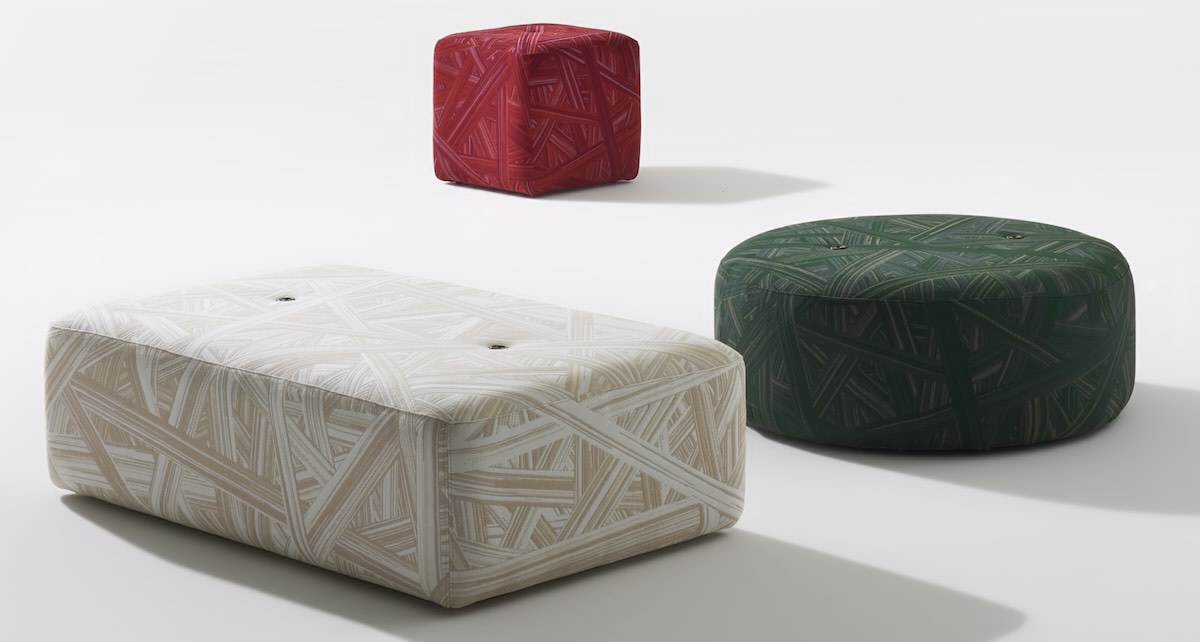
In the development of this collection, did you only supply the ‘dress’ of the furniture pieces or did you also contribute to the design?
We are used to a fast pace and in the furniture business it takes months to develop a piece. It was a four-handed process of selecting from their catalogue, thinking about what we already had, what we lacked and what fabrics would be most suitable. It was interesting to see how one person’s technical knowledge helped the other to understand what could be the best choice. There are no new shapes, rather we tried to work from a ‘collection’ perspective, mixing their families. I prefer a more eclectic approach, it seems closer to the Missoni soul.
Could you be involved in design in the future?
This was a first step. The second will also be to work on the finishes (lacquers, woods, thread colours). Then we’ll start thinking together about the shapes. For these new pieces I want someone young, I want to find the right people. I’d like to be able to make Missoni something that extends into more areas, but always with the same care, the same attention to detail. Like making the cover of a cushion not white but coloured, or with a message printed on it: that’s what makes the difference, call it storytelling or madness. It is a more sentimental side that we often forget, and it would be nice to bring it out again.
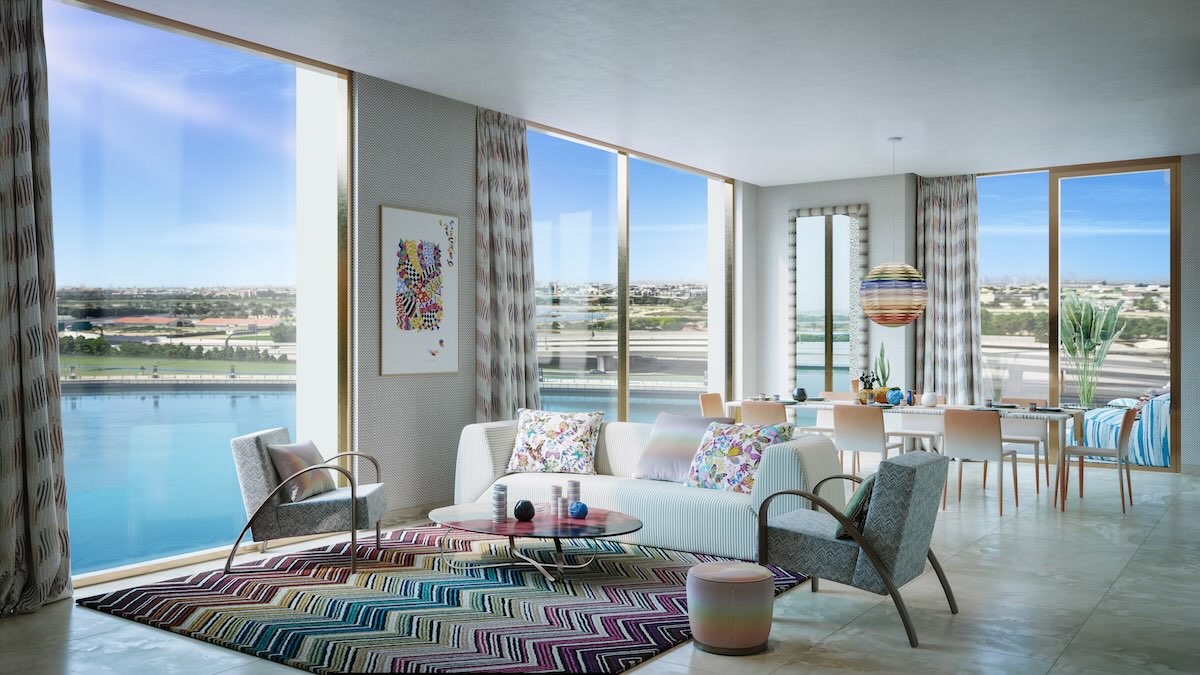
What would you like to do after the outdoors?
Lighting, for example. We are a brand made up of colours and ‘touch’. We do not want our lighting to be high performance (there are many in this sector, very good ones, we are a bit naïve), but rather luminous objects that are one thing when they are off and another when they are on. Always with a touch of irony. We shall see. Something soft, light. And to be light is not to be inconsistent: think of Bruno Munari… And then I want to do glass: vases, objects. Ottavio has already done some things with Venini. I’d like to take up the discourse again. All this talk about working with mixed canes is reminiscent of Missoni’s patterns, and the family has a very strong link with Venice. We have to understand how to do it. And then a thousand other things, there’s nothing wrong with starting: I’m curious. And always happy to be proven wrong.
